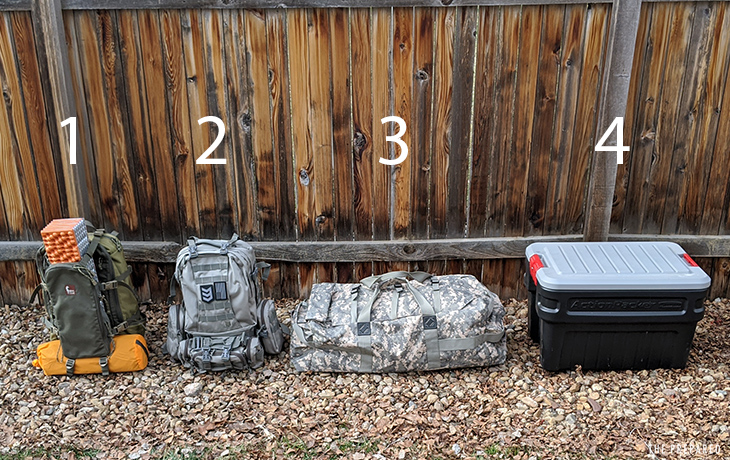Why you should use a priority bag system and ignore BOB vs. INCH

-
Comments (8)
-
Scott Byron - January 2, 2020
This is the first time I hear about thinking about your BOB in terms of levels, rather than time you’ll be spending bugging out or the type of emergency you’re gonna face, and it makes so much more sense! I have been so anxious about building my BOB right, but now it’s everything so much clearer. Thank you so much folks!
-
ReadyPlayer - January 2, 2020
Agreed! I’m starting prepping and thinking about my BOB has given me so many headaches. It’s impossible to think about how much time am I going to be bugging out, what am I peparing for, etc. This system makes things so much easier both in terms of building the actual BOB, as well as having the peace of mind to know that in an emergency scenario where I’m probably going to be frazzled I know that I just grab whichever bag/s I can carry (in their order), and not think about which bag contains what for which emergency.
-
-
Taylor - June 15, 2020
Really great stuff! But can you help clarify for me?
In this article you are advocating the setting up of multiple bags based on priority level, but in your article “Bug Out Bag by Priority Levels” you state, “The levels build on each other — they are not separate bags. Level 1 is the minimum essentials. Level 2 adds sleeping gear and other nice-to-haves. Level 3 adds longer-term gear…”
Would it not always be better to have one bag with everything? I know there’s no single right answer but i’m grateful for advice!
-
Grant Baugh - August 2, 2020
Unfortunately, it’s really hard to fit all of the stuff into one bag. I have a really big bag (probably too big as it would make me stick out) and I still can’t fit all my clothes, food, water, and equipment. And this is after I’ve reviewed everything three times and bringing only important stuff.
-
John AdamaStaff - August 6, 2020
I suspect you may have misinterpreted that point. Yes, the idea is to have one bag as your primary go-bag (which is the point of this article).
The levels represent how serious / well-equipped that One Bag is. Is it a “Level 1” bag that’s just core essentials, or did it go further by adding L2 or L3 equipment to make a more robust kit.
So there’s two concepts here:
- How robust is your main go-bag (level 2, etc)
- What are the bags/containers you will take with you beyond that main bag (#1, #2, #3, etc… what this article is talking about).
Does that help?
-
-
Ben Thal - August 6, 2020
I am thinking of using my GHB as Bugout Bag #1. My car is usually parked in my garage which is located right next to my house… any concerns with that plan? Or should I really invest in a dedicated BOB #1 which is a sepperate bag?
-
Ef Rodriguez - August 6, 2020
If resources are tight or you want to take your time going “full prepper,” no one would fault you for doing what you described. What matters is that you recognize the pros and cons so you can make an informed risk-reward choice that works for you.
An example con being that life might get in the way and you’re not near your car in that moment when you need the bag.
-
-
Cat L - November 21, 2021
I really appreciate the guidance in this article. My BOB is an Osprey Ariel 65 litre and I definitely had it over the suggested weight limit. I practiced taking it up to higher ground recently and I did fine with it, but if an emergency requires us to leave the house we would also be leaving with our young daughter. Such a heavy bag would be a liability I think. The thought of taking some stuff out and putting it in second bag gave me anxiety but I feel much better now that I’ve done that. I also created a small comfort bag for my daughter and a #3 bag of just clothes, toiletries, snacks etc for a scenario where we have to evacuate in our car due to flooding or wild fire risk, which is an increasing concern where I live (not assuming we would be able to get out by car but we will be more ready if that’s an option).
-